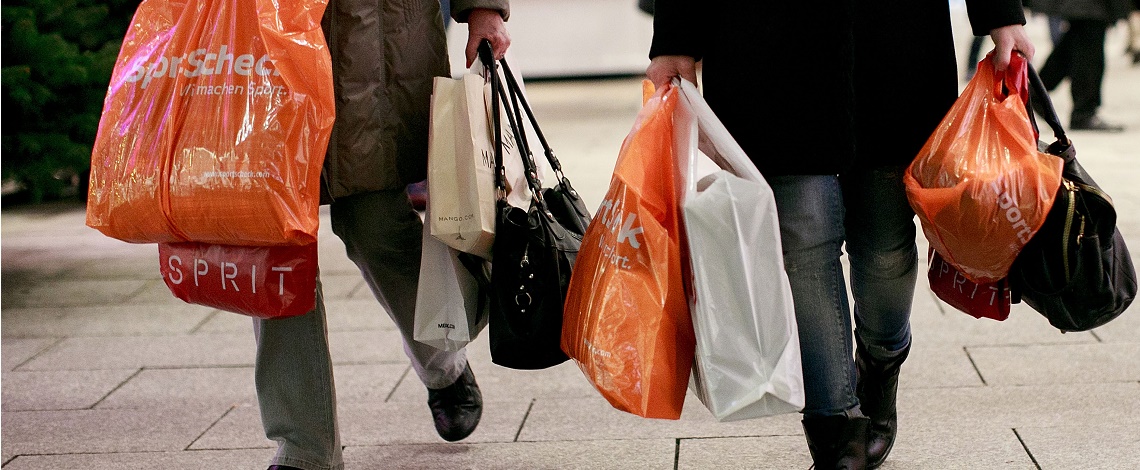It’s been a long wait, but economists are confident last year’s shock economic growth contraction was a one-off, and the quarter of a century of expansion will continue in Australia.
Consumers appear to be already rejoicing, with new figures showing confidence surging by 4.7% in the past week following a disappointing decline over February, AAP reported.
This is despite a variety of disappointing wage growth figures in the past week and the Fair Work Commission’s decision to cut Sunday penalty rates.
“It is important that we continue to provide that confidence in the economy and key to that is returning the budget to balance,” Treasurer Scott Morrison told parliament on Tuesday.
The ANZ-Roy Morgan confidence index is comfortably above its long-term average stretching back to 1990. Strong confidence suggests people are more likely to spend at the shops.
ANZ senior economist Jo Masters predicts Wednesday’s national accounts will show a healthy rate of GDP growth. “This could support consumer confidence, particularly around the economic outlook, in weeks to come,” she said.
Economists were finalizing their growth expectations for the December quarter after the final pieces of the jig-saw were released on Tuesday in the form of data for international trade and government spending.
Westpac senior economist Andrew Hanlan, for example, upgraded his forecast to a 0.9% rise in the quarter, which would lift the annual rate to 2.1%. This would be a marked turnaround from the 0.5% contraction in the September quarter, the worst performance since the 2008-2009 global financial crisis.
International trade, or the current account deficit shrank more than 60% in the December quarter compared to three months earlier to $3.85 billion. This was the smallest deficit in 16 years—or the lowest since 1980 as a proportion of GDP—and partly reflected the result of soaring iron ore and coal prices.
Exports will contribute 0.2 percentage points to the growth result. Government investment was also stronger than expected, and will add 0.3 percentage points to GDP.
The positive GDP result would mean Australia has avoided a technical recession and is still on course to complete more than 26 years of uninterrupted expansion by the end of this year, beating the present record held by the Netherlands.
Penalty Rates
Cuts to penalty rates will hasten the “mass casualisation” of Australia’s workforce, leading to a decrease in job security, less paid leave and more workplace stress, a new report warned on Monday.
The McKell Institute says the Fair Work Commission’s “alarming” decision to cut penalty rates for a range of retail, hospitality and fast food workers will further discourage employees from pursuing secure part-time or full-time work, pushing them instead into less secure but higher-paying casual jobs. “For many workers, casual work can be an attractive and flexible option,” the left-leaning think-tank said in the report.
“But for others, casual work means less job security, less annual work breaks, and a more tenuous relationship between them and their employer. These factors result in enhanced job insecurity, which can lead to financial stress and poor health outcomes.”
Japan Factory Output Drops
Japan’s industrial production declined for the first time in six months in January with the output of transportation equipment dragging down overall production sectors in the recording period, the ministry of economy, trade and industry said in a preliminary report on Tuesday.
According to the ministry, factory output dropped 0.8% in January from a month earlier, missing median market forecasts for a 0.4% rise, with the index of output at factories and mines standing at 99.8 against the base of 100 in 2010, Xinhua reported.
The ministry, however, despite the decline in January, maintained its basic assessment, stating that industrial production shows signs of improving.
Looking ahead, the government said that industrial production is expected to rise 3.5% in February, although it would retreat again in March by as much as 5%.
Production was dragged down in January by slumping output in sectors related to transport equipment, primarily, the ministry said, followed by chemicals, general-purpose, production and business oriented machinery.
The index of industrial shipments slid 0.4% to 98.5, and the index of inventories was flat at 107.5, the government’s data showed.
In terms of sectors that contributed to a fall in shipments in the recording period, transport equipment again was the major division, followed by chemicals and non-ferrous metals, the ministry’s data showed.
As for inventories in the recording period, the ministry said that industries that mainly contributed to a decrease comprised general-purpose, production and business oriented machinery, electrical machinery, and information and communication electronics equipment.
The unexpected drop in industrial output could be attributed to the yen’s appreciation against the US dollar, market analysts proffered, as global markets remain circumspect about new economic policies under US President Donald Trump.
On Monday Japan’s lower house of parliament approved a record draft budget for fiscal 2017 as the government grapples to finance rapidly swelling welfare costs to tackle the nation’s demographic crisis and stagnant inflation.
The 97.45 trillion yen ($870 billion) budget will be enacted swiftly before the end of the current fiscal year on March 31 as Japan has been mired in deflationary pressure for decades, with various stimulus measures by the Bank of Japan and Prime Minister Shinzo Abe’s numerous installments of his “Abenomics” aggressive economic policies, having negligible effects.


